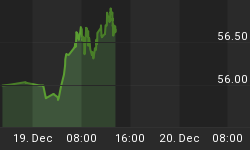In the 20 weeks ended April 23, the Federal Reserve's outright holdings of U.S. Treasury securities had fallen by $231 billion, which is an annualized decline of $600.7 billion (see Chart 1). Up until recently, the Fed has rarely been a net seller of U.S. Treasury securities (see Chart 2). Of course, the reason the Fed has become such a large net seller of U.S. Treasury securities is that it is now providing about 14% of total reserve credit via the discount window, the Term Auction Facility (TAF) and the Primary Dealer Credit Facility (PDCF) (see Chart 3). If the Fed does not want the fed funds rate to trade below its target rate, it has to drain reserves to offset the reserve injections via the discount window, TAF and PDCF.
The non-partisan Congressional Budget Office is projecting that the fiscal year 2008 federal budget deficit will increase to $396 billion from $162 billion in fiscal year 2007. So, federal borrowing in this fiscal year is projected to be 2.4 times as much as last year. And on top of this increased federal borrowing, we now have the Federal Reserve providing $601 billion less support to the Treasury securities market at an annual rate. Is it any wonder why the yields on Treasury securities are rising now? You might want to put your IRS tax-rebate manna into some sort of saving account for your children so that they can pay the higher taxes needed to service the public debt that is being incurred to bailout imprudent borrowers and lenders in the recent housing bubble.
Chart 1
Chart 2
Chart 3















